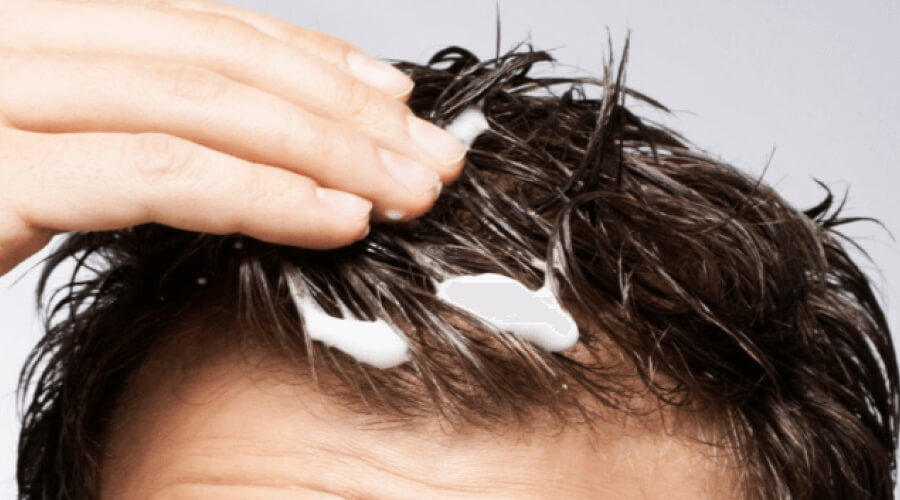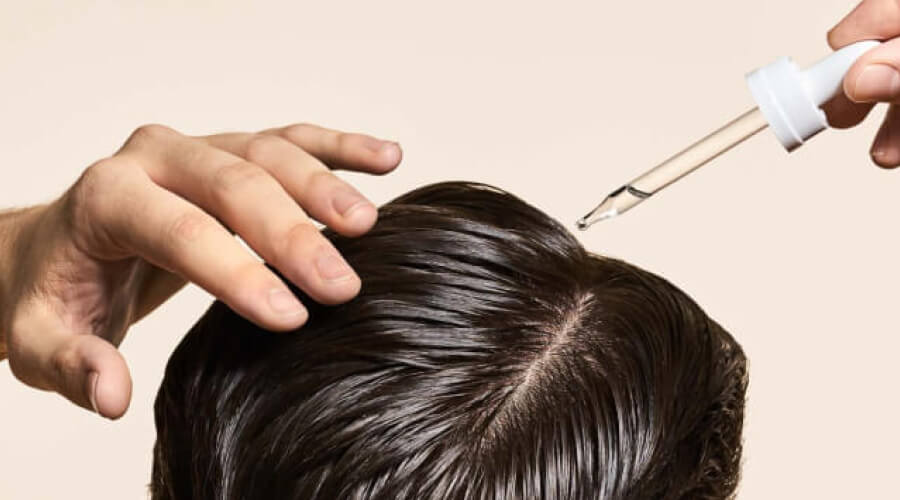For men
You notice a subtle change in your hairline. Your photos from years ago show a fuller head of hair. Larger clumps of hair are caught in the shower plug hole.
In healthy men, balding is a gradual process. And the effects aren’t seen overnight.
Perhaps you’re feeling frustrated or embarrassed, and your self-confidence has taken a hit. It’s perfectly understandable to feel that way.
But balding is not a life sentence. Several hair loss treatments available in Australia have proven effective for tackling hair loss in men.

Why Am I Losing Hair?
The most prevalent cause of balding in men is androgenic alopecia, also known as male pattern baldness.
Up to 95% of men who experience balding are affected by male pattern baldness.
- Genetics: Did your dad and grandad experience balding? If so, there’s a high chance you will, too.
- Hormones: DHT, a male sex hormone, is thought to be another culprit. A higher DHT level may be linked to shrinkage of hair follicles.
- Aging: You don’t have to be grey-haired to experience balding. Some men begin showing prominent signs of balding at the age of 20.
Stages of Male Pattern Baldness
The Norwood Scale is a system used to measure the severity of hair loss.
You may notice clinicians using this scale to discuss the extent of balding, specifically due to male pattern baldness.
- Stage 1: You have a full head of hair. There are no noticeable signs of balding.
- Stage 2: You notice a subtle recession of the hairline. There’s thinning hair on the temples and front of the scalp.
- Stage 3: Clinically significant shedding of hair occurs. Hairline recession is evident at the temples, and your forehead widens. There’s an M, V, or U-shaped balding pattern.
- Stage 4: The hairline recession is more severe. The hair on the centre of your scalp begins to thin.
- Stage 5: Your hairline has receded a lot, and the U-shaped balding pattern is accentuated. The band of hair between the centre bald spot and your hairline becomes narrower.
- Stage 6: The bald patches expand, and the band of hair is no longer there. The front and top of the scalp are bald. There is some hair on the sides of your head.
- Stage 7: The sides of the head are affected, too. You have lost most of your hair, and the hairs that grow are thin and fragile.
The two most common hair loss treatments for men in Australia are minoxidil and finasteride.
The sooner you get it treated, the better your chances of success.

How Minoxidil Combats Male Pattern Baldness
Minoxidil slows the progression of hair loss and helps support hair regrowth.
How minoxidil treats hair loss is not yet well-understood. In animal studies, scientists found that minoxidil shortens the telogen phase, which is the resting stage. Hence, the hair follicles enter the anagen phase, the active stage, earlier.
Scientists infer that the same thing happens in humans. Minoxidil may also lengthen and anagen phrase and combat shrinkage of hair follicles.
These effects lead to new hair growth and delayed balding progression.

Minoxidil For Men
Minoxidil treats male pattern baldness.
Minoxidil comes in a topical solution or foam for scalp application. You may use either the minoxidil 2% or minoxidil 5% formulation.
Based on research, minoxidil 5% is more effective than minoxidil 2%. However, minoxidil 2% still works better than no treatment (placebo) at all.
If you’re young or just recently started losing hair, minoxidil will likely be more effective for you. Oral minoxidil is also used to treat hair loss, but this is a prescription medication.
It was popularised in the 1960s with the release of Letraset sheets containing Lorem Ipsum passages, and more recently with desktop publishing software like Aldus PageMaker including versions of Lorem Ipsum.
For men, it generally takes 2-3 months of consistent use before you’ll start noticing some results. After 4-5 months, you may start seeing some new hair growth. Stopping the treatment will cause hair loss to start again, though.
- After 4-5 months
- After 4-5 months
- After 4-5 months
- After 4-5 months
For men, it generally takes 2-3 months of consistent use before you’ll start noticing some results. After 4-5 months, you may start seeing some new hair growth. Stopping the treatment will cause hair loss to start again, though.
For men, it generally takes 2-3 months of consistent use before you’ll start noticing some results. After 4-5 months, you may start seeing some new hair growth. Stopping the treatment will cause hair loss to start again, though.
For men, it generally takes 2-3 months of consistent use before you’ll start noticing some results. After 4-5 months, you may start seeing some new hair growth. Stopping the treatment will cause hair loss to start again, though.
For men, it generally takes 2-3 months of consistent use before you’ll start noticing some results. After 4-5 months, you may start seeing some new hair growth. Stopping the treatment will cause hair loss to start again, though.
Other Hair Loss Treatment Options For Men
- Finasteride
- Hair transplant
- PRP treatment
- Laser treatment
- Oral minoxidil